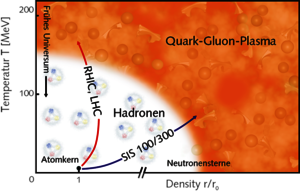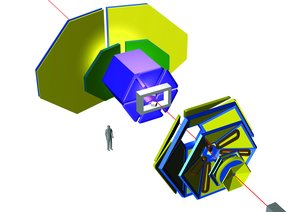Nuclear Matter Physics

Of special interest is the possible transition to a new form of matter that might exist in the interior of neutron stars. At very high densities and temperatures, the nucleons are expected to dissolve into their constituents and to form a plasma, consisting of quarks, gluons, and other particles - the so-called quark-gluon plasma.
Physicists suspect that in the early universe, about 1 millisecond after the Big Bang, such a phase transition occurred in the opposite direction from the quark-gluon plasma into hadronic matter, i.e. into our present-day matter, which is governed by protons and neutrons (and electrons).

©
Picture: GSI Helmholtzzentrum für Schwerionenforschung

©
Picture: GSI Helmholtzzentrum für Schwerionenforschung



